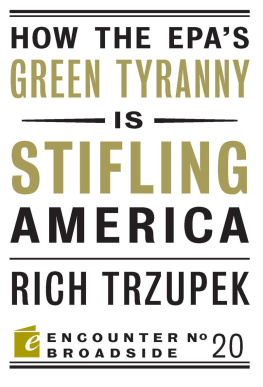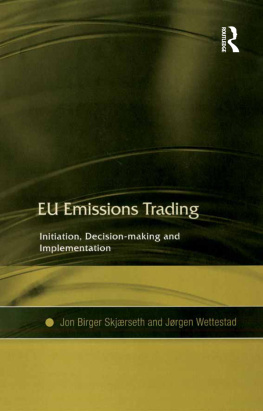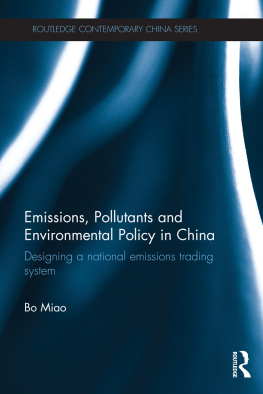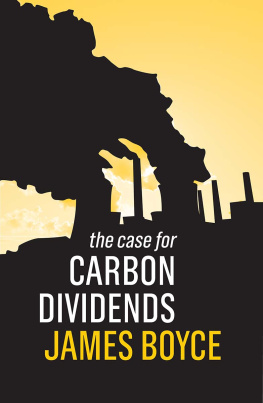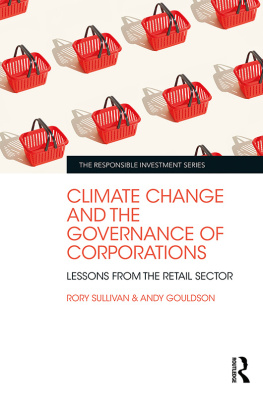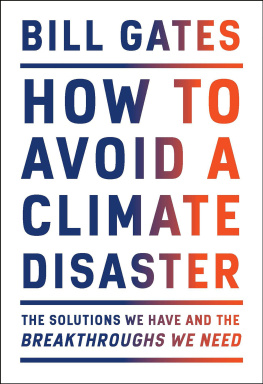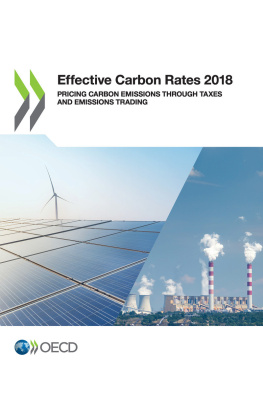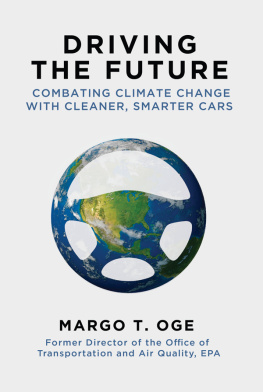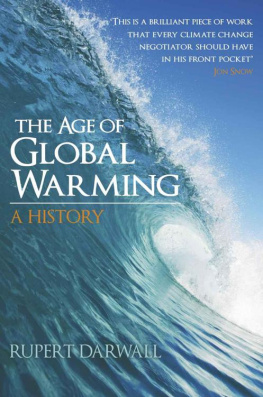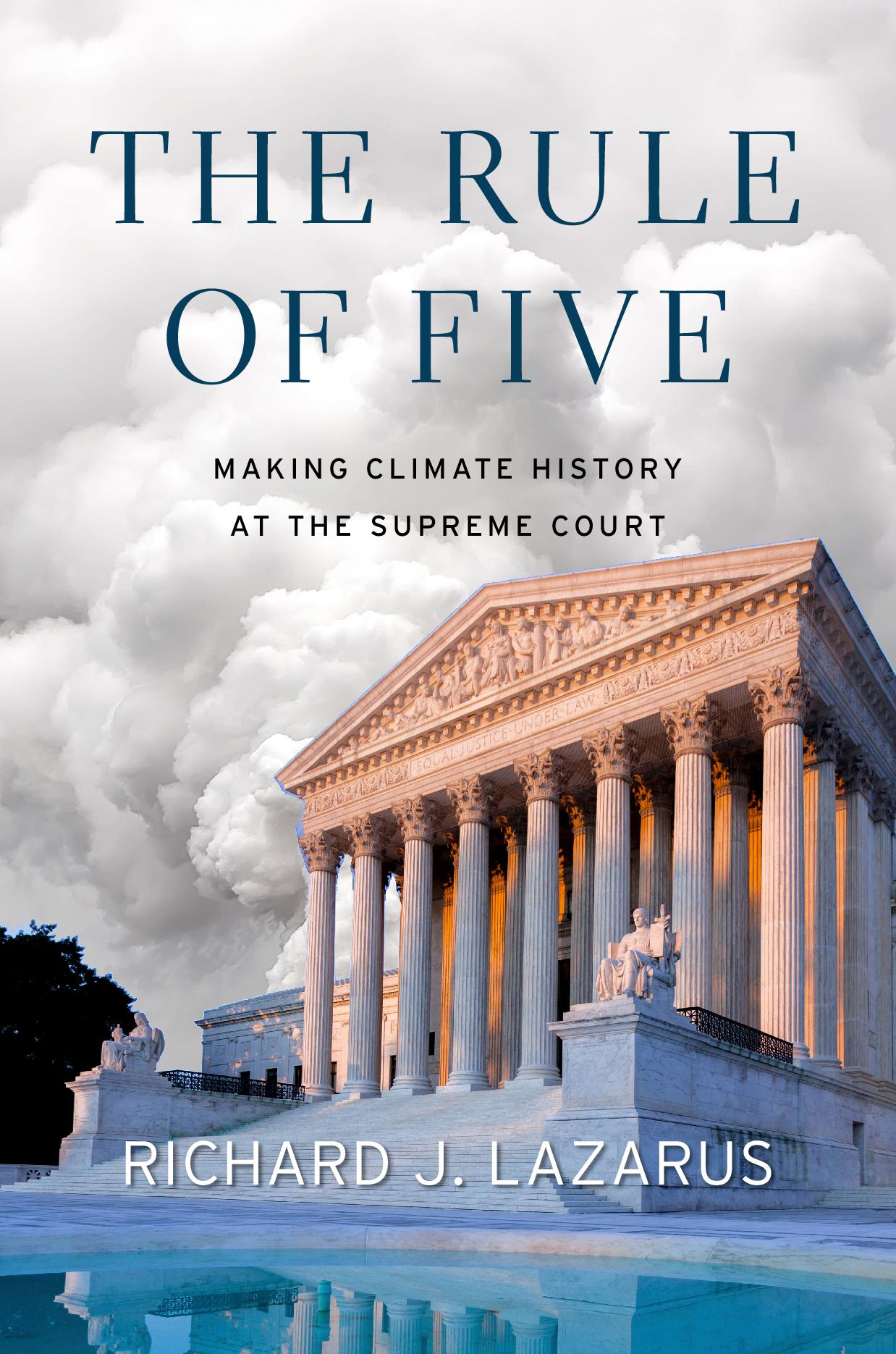Copyright 2020 by Richard J. Lazarus
Names: Lazarus, Richard J., author.
Title: The rule of five : making climate history at the Supreme Court / Richard J. Lazarus.
Description: Cambridge, Massachusetts : The Belknap Press of Harvard University Press, 2020. | Includes index.
Subjects: LCSH: United States. Supreme CourtDecision making. | Environmental lawUnited StatesInterpretation and construction.
On the morning of April 2, 2007, the United States Supreme Court announced its decision in Massachusetts v. United States Environmental Protection Agency, the most important environmental law case ever decided by the Court. The stakes were enormous. At issue was the legal authority and responsibility of the United States government to address the most pressing global environmental problem of our timeclimate change.
One person, Joe Mendelson, acting very much alone, had triggered the events that had led to this moment. Fed up with the lack of action during the presidency of Bill Clinton to address the climate issue, he had decided to do something about it, even when other environmentalists had urged him to stand down. By the time the case reached the Supreme Court, George W. Bush was president and Mendelson had been joined by dozens of lawyers; together, they made up a team that called themselves The Carbon Dioxide Warriors. They sought to do something no environmentalist had ever done before: take a case to the Supreme Court and defeat the president of the United States. Now it was up to the nine Justices of the Supreme Court to decide.
A ruling in favor of a coalition of states, local governments, and environmental groups led by Massachusetts could mean that after years of inaction, the United States would finally take action to address a global threat with potentially catastrophic consequences for which the United States, more than any other nation, was largely responsible. A loss, by contrast, could set back or even destroy efforts across the country to bring lawsuits to force the federal government to act on the climate issue. The latter prospect was why many thoughtful environmentalists had tried to prevent the Massachusetts case from ever going before the Justices. They were justifiably worried they might not only lose, but lose big.
This book tells the story of Massachusetts v. EPA. It is an unlikely yet nonetheless hopeful and inspiring story that reveals the best of Supreme Court litigation today, while acknowledging why it is hard to make law to address climate change. The Massachusetts story underscores the serendipitous pathways and fascinating personalities that can lead to a historic ruling. It also opens a window into the Court itself, and the many ways in which environmental cases present particular challenges both for the Justices and for the advocates who appear before them.
October 20, 1999. Joe Mendelson pulled his desk drawer open and reached inside. The several-hundred-page petition he had drafted more than a year earlier was still there, as he knew it would be. For all those months, the decision to fileor nothad weighed on him. It was a classic late October autumn day in the nations capital, in the low fifties, sunny with a sporadic light drizzle. But this was not just any day. It was the day Joe Mendelson edged himself to the point of acting.
Mendelson was a public interest attorney working for the International Center for Technology Assessment, a big name for a tiny, shoestring environmental organization no one had ever heard of. In his early thirties, married with two young children, he was still youthfully fit and could easily have passed for a decade younger. Until recently his Capitol Hill office had consisted of a small bedroom overlooking an alley in a small townhouse across from a liquor store. Calling it an office may in fact be too grand; he kept his file cabinet in the bedroom closet. A city housing inspector certainly hadnt been impressed.
A few weeks earlier Mendelson and his four colleagues had relocated to an even smaller suite of rooms in a nondescript building on the Hill after the inspector had questioned the legality of their office in a residential neighborhood. As Mendelson sat staring into his desk drawer, he knew his job lacked the status and trappings of the better-heeled national environmental public interest groups. But he also knew he lacked their bureaucratic constraints. He could decide largely on his own whether legal action was needed. And he had decided that the need for such action now was obvious. The consequences, however, were far less so.
The first generation of environmental public interest lawyers, in the 1970s and 1980s, had focused on easily visible and immediately harmful industrial air and water pollution. But Mendelson, who began law school in 1988, became a public interest lawyer just when alarms were beginning to sound about the less visible, more complex, and potentially catastrophic problem of what was then called global warming. In June 1988, only a few months before his first day of classes, James E. Hansen, a National Aeronautics and Space Administration scientist, testified before Congress that the earth was warming as a result of the greenhouse effectthe absorption in the upper atmosphere of heat from the sun by certain human-produced gases. Hansen spoke in the measured words of a scientist, but with such ominous and dramatic import that the New York Times published a front-page article on his testimony and included a graph produced by Hansen and a colleague showing that the four warmest years in the past century had all occurred in the 1980s. The greenhouse effect is here, Hansen declared.
Yesterdays Gone
When Senator Al Gore from Tennessee was elected vice president in November 1992, environmentalists had reason to be pleased. Gore had written the book on climate changeEarth in the Balanceproposing an ambitious, if not radical, Global Marshall Plan to avert environmental devastation.
What was more, the environmentalists knew that Clinton had chosen Gore to be his running mate not despite Gores boldly stated environmental ambitions but because of them. Clinton picked Gore in large part because Gores book bolstered his chances of winning the presidency. He knew that his own environmental record as governor of Arkansas was anything but clean. Indeed, it bordered on the abysmal, which is why founding members of the Sierra Clubs Arkansas chapter resigned in protest when the national Sierra Club organization endorsed Clinton for president.
Governor Bill Clintons administration had burned toxic waste at Superfund hazardous waste sites, failed to crack down on massive water contamination caused by the states powerful hog and poultry industries, declined to prevent clear-cutting of forests, and proposed a water quality standard for the toxic chemical dioxin that was one hundred times less restrictive than the standard recommended by United States Environmental Protection Agency (EPA).



